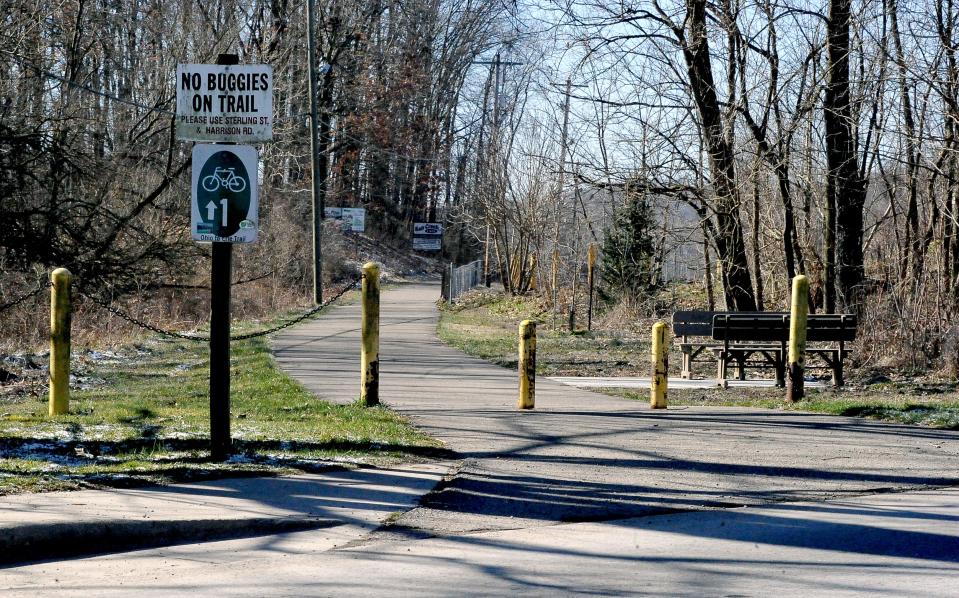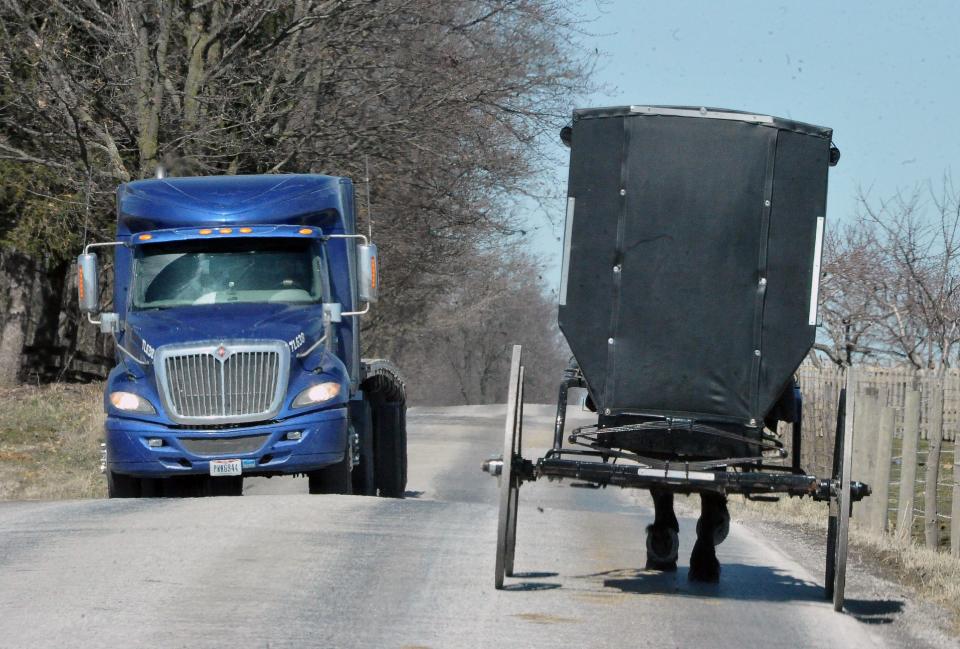Road safety: Buggy, bikes lanes, new trails sought for Wayne, Holmes counties

A $24.9 million project aims to make Wayne and Holmes county roadways safer while connecting existing trails that link to a 326-mile statewide trail and a 3,700-mile trans-continental path.
To fund the multi-million dollar project, the counties hope to receive $24.3 million in RAISE federal funds and an additional $6,000 from Rails to Trails and the Amish Steering Committee, which represents Amish communities and collects local taxes.
If the grant application is successful, crews will construct 3.5 miles of trails, 2.5 miles of bike lanes and 5.75 miles of multi-purpose buggy and bike lanes, said Wayne County Engineer Scott Miller.
"Wayne County has a huge Amish population and it ranks No. 1 for buggy crashes in Ohio, so this will be a huge safety improvement," Miller said.
The project would also see four solar electric vehicle charging stations and five buggy detectors installed.
Connecting over 4,000 miles of trails

For years, Rails to Trails of Wayne County has turned unused train tracks into walking trails.
Now, the nonprofit is working with Miller's crew of engineers to connect the Great American Rail-Trail and the Ohio to Erie Trail, over 4,000 miles of trails.
The Great American Rail-Trail begins in Washington, D.C. and runs through 12 states, connecting more than 125 rail-trails. It ends at the Pacific Ocean in Washington state, according to a project description from the Wayne County Engineer's Office.
The route is roughly 70% complete, with a few gaps remaining like those in Wayne County.
The Ohio to Erie Trail connects Lake Erie from Cleveland to the Ohio River in Cincinnati, according to the project description.
With over 88% complete, the 326-mile trail is largely off-road. The $24.9 million project in Wayne County would separate local segments from roadways.
Miller said this project could increase tourism while making the roads safer for hikers and bikers.
A need for safer roadways

Another goal is to reduce crashes on busier roadways that see a variety of vehicles.
The region of Wayne and Holmes counties is home to over 35,000 Amish as of 2019, according the Young Center for Anabaptist and Pietist Studies, Elizabethtown College.
Coupled with vehicles and the growing use of bikes, e-bikes and scooters, Miller said, the roadways have become more crowded.
Wayne County leads the state in buggy-related crashes, according to Ohio State Highway Patrol Crash statistics. There were 135 reported crashes from 2018 to 2023. Holmes County is second with 81.
In the same time period, both counties saw 81 bicycle-related crashes.
To mitigate crashes, Wayne and Holmes counties would build separate lanes for high bike and buggy traffic areas.
Where to expect construction

Construction would likely not begin until 2025 while the two counties wait on RAISE Grant infrastructure funding and further planning and design.
The current Wayne County plan would have bike lanes installed along Bank Street, linking the village of Apple Creek to the regional trail network, according to the project description. This lane would be connect to Fredericksburg via a trail improvement that starts on Buss Road.
Bank Street Bridge would also be widened to allow for bike lanes. This would be funded through the Bridge Formula Program, which awarded Wayne County $1.1 million for the project.
These two additions would connect to the Great American Rail-Trail.
Combined 8-foot buggy-bike lanes would be constructed from Kidron south to state Route 241 on both sides of the road. This would connect buggy lanes in Holmes County running through Mount Hope.
Two more phases of improvements would see new trails, bike lanes and buggy lanes constructed in the coming years, Miller said.
Charging stations, warning systems
Electric vehicle chargers would be installed in Fredericksburg, Apple Creek, Kidron and Mount Hope, costing an estimated $2.7 million.
Buggy warning systems would flash atop hills on Moreland Road and Harrison Road just east of Fredericksburg and just east of Mt. Eaton cautioning drivers when a buggy is coming up the hill, Miller explained.
Intersection conflict warnings would be placed at Carr and Moreland roads and Carr and Apple Creek roads, he said.
"These will flash when there is oncoming traffic," Miller said. "This will be good for the Amish in buggies because they sit farther back than drivers in cars, so they have reduced visibility."
The Kidron improvements plus safety lights will cost an estimated $11.1 million while trail and bike lane construction will cost an estimated $9.1 million.
"We have been pulling together the application for the RAISE Grant funds to address this project," Miller said. "In the end, it'll all be worth it."
This article originally appeared on The Daily Record: Buggy, bikes lanes, new trails sought for Wayne and Holmes counties

